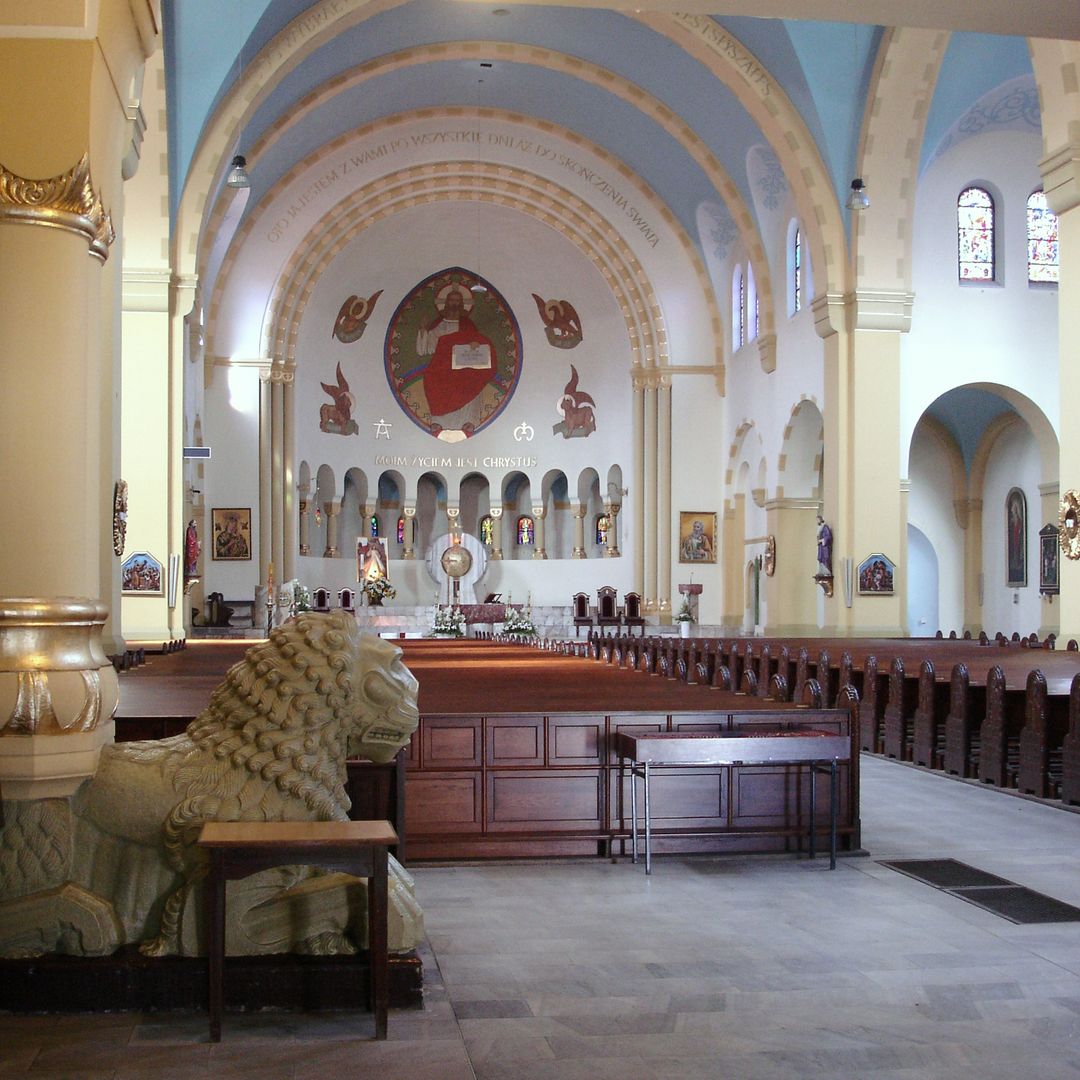St. Paul the Apostle Church in Ruda Śląska-Nowy Bytom
7.73

Overview
The Church of Saint Paul the Apostle in Nowy Bytom, erected between 1909 and 1912 according to the design of Dutch architect Johannes Franziskus Klomp, is a valuable example of Neo-Romanesque sacral architecture in Upper Silesia. It replaced an earlier church from 1885, which no longer met the needs of the growing population in the industrial hub that Nowy Bytom had become. The church was designed as a three-nave basilica with a transept, featuring a distinctive tower mass flanked by octagonal turrets. Its façade is characterized by rich sculptural details, including figures of saints that reflect local patronages associated with metallurgy and mining, such as Saint Florian and Saint Barbara.
The interior of the church is adorned with barrel vaults with lunettes, as well as elegant arcades and narrow windows that allow light into the spacious main nave. Its architecture is a synthesis of medieval influences—both Western and Eastern—with Byzantine and Islamic elements. The success of the construction, supervised by Edward Adamczyk, and the consecration carried out by a bishop who acknowledged the efforts of the local community, stand as a testament to the deep religiosity and commitment of the residents. Interestingly, the church was initially planned to be dedicated to the church in Rheine, but its patronage was changed to the current one on the initiative of the steelworks director.
The church has undergone several renovations, including in 1982 and 2009–2010, which have helped preserve its historical character. With its rich iconographic program, the external sculptures and inscriptions highlight the importance of the community and its ties to religion, which have shaped the culture of this region.
Location
2025 Wizytor | All Rights Reserved